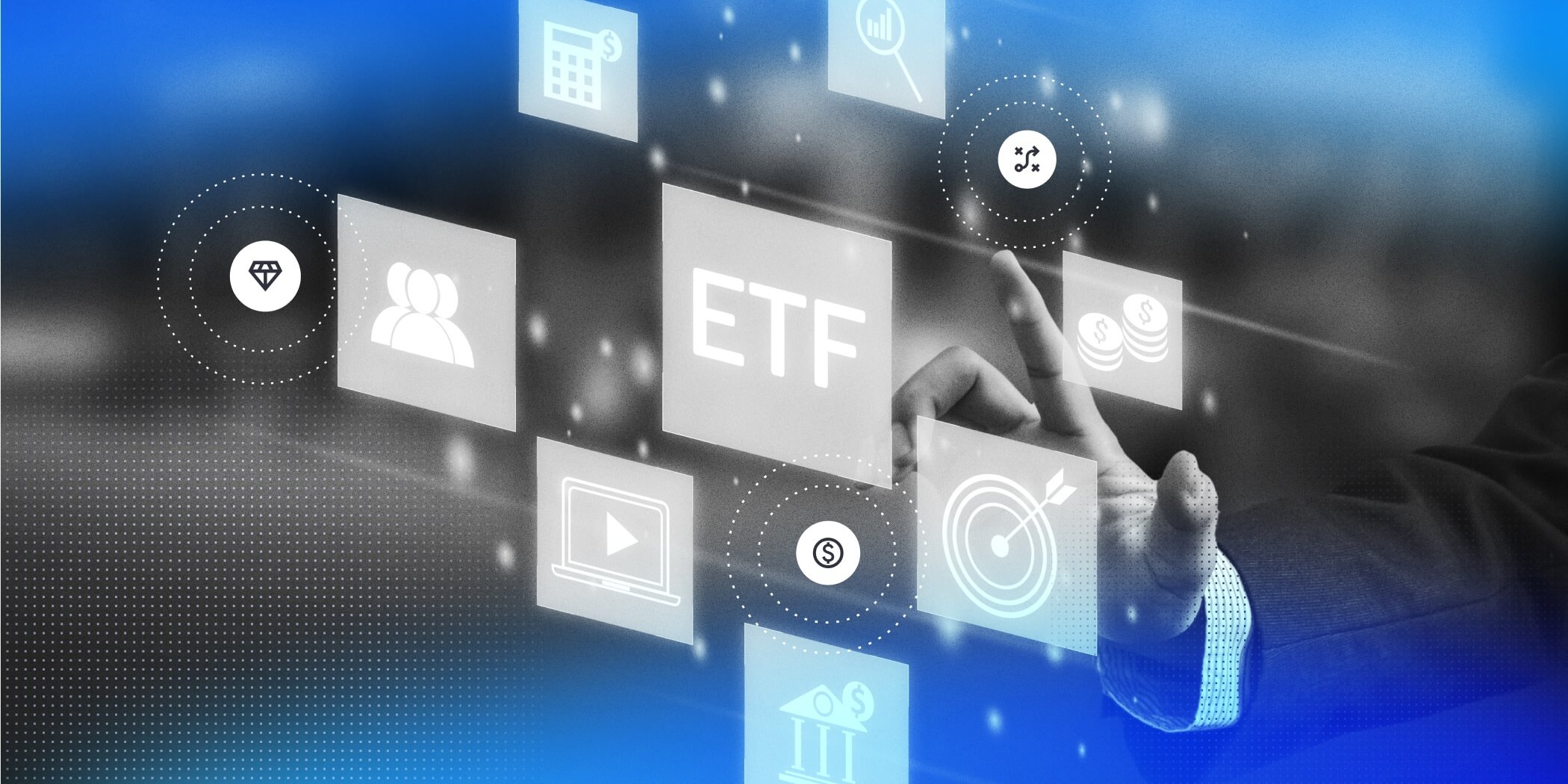How Unified Advisor Intelligence Eliminates Spreadsheet Chaos and Automates Prioritization
ETF distribution teams waste 15-20 hours weekly on manual advisor prospecting, pulling data from fragmented CRMs, email platforms, webinar registrations, and spreadsheets to build target lists wholesalers can actually use. B2B sellers work 52-hour weeks but spend only 23% of time in core selling activities, with the remainder consumed by administrative tasks that generate zero revenue.
The cost compounds beyond wasted hours. Wholesalers pursue advisors based on stale data while missing high-intent prospects who demonstrate genuine interest across multiple channels. Without unified intelligence connecting email engagement, video watching, webinar attendance, and website behavior to individual advisors, distribution teams operate blindfolded.
Drowning in manual list compilation? Explore Odyssey's unified advisor intelligence for automated prioritization.
The Spreadsheet Chaos Plaguing ETF Distribution
Distribution teams cobble together advisor prospect lists from six fragmented sources without unified intelligence. Email platforms report who opened campaigns. Webinar software tracks attendees. CRM systems contain call notes. Website analytics show visitors. Video platforms log viewers. Each system operates independently, forcing manual compilation into spreadsheets wholesalers can actually use.
This manual process consumes 15-20 hours weekly per team member. Analysts export data from multiple platforms, remove duplicates, cross-reference advisor information, and prioritize based on gut instinct rather than behavioral signals. Average sales reps burn two days weekly on administrative work that unified platforms eliminate entirely. The spreadsheets become outdated within days as new engagement occurs, creating a never-ending cycle of manual updates.
Email-based tracking loses advisor continuity when they change firms or update contact information. Distribution teams treat the same advisor as a new contact each time they switch firms, creating relationship amnesia that wastes resources rebuilding knowledge about advisors already familiar with fund strategies. Without CRD-indexed tracking maintaining permanent advisor profiles, historical engagement data disappears with every firm transition.
Why Manual Prioritization Fails Distribution Teams
Spreadsheet-based prospecting forces wholesalers to pursue wrong targets. An advisor who opened ten emails but watched zero videos receives identical priority as one who consumed 90% of fund presentation content, despite dramatically different intent levels.
Traditional systems cannot weight engagement types appropriately because they lack unified data showing complete advisor journeys. The prioritization gap creates competitive disadvantage. Companies empowering sales teams through technology report efficiency gains of 10-15%, while teams relying on manual processes waste resources pursuing low-intent prospects.
Issuers using unified platforms identify advisors demonstrating high-attention behaviors like video watching, webinar participation, and replay frequency. They deploy wholesalers based on actual purchase intent signals rather than guesswork. Manual prioritization also ignores geographic clustering opportunities. When ten advisors with high engagement scores concentrate in a single metro area, unified platforms automatically flag deployment opportunities for concentrated meeting schedules. Spreadsheet-based teams miss these patterns entirely.
Ready to eliminate manual prospecting? View geographic intelligence for automated clustering analysis.
The Six-Channel Unification Solution
Effective distribution efficiency requires consolidating six engagement channels into unified advisor profiles. Email campaign tracking captures opens, clicks, and response patterns. Website behavior analytics monitor page visits, ticker searches, and time on site. Video presentation intelligence tracks watch duration, completion rates, and replay frequency.
Webinar participation data records attendance, questions asked, and follow-up requests. Geographic information reveals advisor concentration by territory. CRM activity integration consolidates call notes, meeting outcomes, and pipeline progression.
Platforms unifying these channels eliminate manual compilation by automatically consolidating engagement data at the advisor level. CRD-indexed tracking maintains permanent profiles surviving firm changes and email updates, preventing relationship amnesia plaguing email-based systems. Each engagement across all six channels updates the unified advisor profile in real-time, providing distribution teams with current intelligence rather than stale spreadsheets requiring weekly manual updates.
Automated intent scoring algorithms prioritize advisors based on complete behavioral signals rather than single-channel metrics. Advisors demonstrating high-attention behaviors across multiple channels receive higher priority scores than those with minimal engagement despite numerous email opens.
Measuring Distribution Efficiency Gains
Pilot programs documented measurable improvements. Distribution teams reduced list compilation from 15-20 hours weekly to 9-12 hours, representing 37% time savings. This efficiency gain recovers 312-416 annual hours per team member for higher-value activities like relationship building and strategic account planning.
Conversion rates improved 32% when wholesalers focused exclusively on advisors with highest intent scores based on unified engagement data versus pursuing prospects from manually compiled lists. The improvement stems from prioritization accuracy. Unified platforms identify advisors demonstrating genuine interest through sustained attention across multiple channels rather than single touchpoints that may not predict allocation behavior.
Operational benefits extended beyond raw time savings. Elimination of relationship amnesia through CRD-indexed tracking prevented duplicate outreach to advisors who changed firms, improving advisor experience by avoiding repetitive conversations. Automated geographic clustering enabled optimized wholesaler deployment, concentrating meeting schedules in territories with high-intent advisor clusters.
The Defiance Analytics Approach to Distribution Efficiency
Defiance Analytics developed Odyssey as the first unified advisor intelligence platform for ETF distribution teams seeking to eliminate manual prospecting inefficiency. The platform consolidates six engagement channels into CRD-indexed advisor profiles updated in real-time as new interactions occur.
Unified intelligence capabilities include:
- Automated advisor list compilation eliminating 15-20 hour weekly manual processes
- CRD-indexed tracking maintaining permanent profiles across firm changes
- AI-enhanced intent scoring prioritizing advisors by complete behavioral signals
- Geographic clustering analysis identifying wholesaler deployment opportunities
- Want to Meet dashboard surfacing advisors with 97-100 intent scores for immediate follow-up
Distribution teams using Odyssey achieve 37% time savings in list compilation and 32% conversion improvements through data-driven advisor prioritization. The platform transforms distribution efficiency by automating manual processes that consume two days weekly while enabling wholesaler focus on genuine high-intent prospects.
Ready to eliminate spreadsheet chaos? Discover our business consulting services for revenue operations optimization.
From Manual Chaos to Automated Intelligence
Distribution efficiency separates ETF issuers achieving asset accumulation goals from those struggling with insufficient flows. Teams wasting 15-20 hours weekly on manual list compilation and spreadsheet management operate at competitive disadvantage against issuers deploying unified platforms that automate prospect prioritization.
The solution requires consolidating fragmented data sources into unified advisor intelligence with CRD-indexed tracking surviving firm changes. Platforms providing six-channel unification with automated intent scoring eliminate manual compilation inefficiency while improving conversion rates through accurate prioritization based on complete behavioral signals.
Defiance Analytics specializes in distribution efficiency optimization for ETF issuers seeking measurable improvements in sales productivity and prospect prioritization accuracy.
Transform distribution operations with unified advisor intelligence. Book a consultation to discuss how Odyssey eliminates manual prospecting inefficiency. Review our ETF launch case study for documented results.
FAQ
How much time do ETF distribution teams waste on manual prospecting activities?
Distribution teams typically waste 15-20 hours weekly on manual advisor prospecting from fragmented CRMs, email platforms, and analytics tools. This represents 312-416 annual hours per team member spent on administrative tasks rather than revenue-generating activities like relationship building.
Why do traditional CRM systems fail to provide unified advisor intelligence for ETF teams?
Traditional CRMs operate as isolated systems without connecting email, video, webinar, and website data into unified profiles. Email-based tracking loses continuity when advisors change firms, creating relationship amnesia. Without CRD-indexed tracking, historical engagement disappears with each firm transition.
What efficiency gains can distribution teams expect from unified advisor intelligence platforms?
Distribution teams achieve 37% time reduction in list compilation, recovering 312-416 annual hours per team member. Conversion rates improve 32% when focusing on highest intent scores. Additional benefits include relationship amnesia elimination and automated geographic clustering for optimized wholesaler deployment.
How does CRD-indexed tracking differ from email-based advisor tracking systems?
CRD-indexed tracking maintains permanent advisor profiles by individual CRD numbers rather than email addresses. When advisors change firms, CRD systems preserve complete engagement history. Email-based systems lose continuity with every firm change, treating advisors as new contacts.
What specific engagement channels should unified platforms consolidate for ETF distribution?
Effective platforms consolidate six channels: email campaign tracking, website behavior analytics, video presentation intelligence, webinar participation data, geographic information, and CRM activity integration. This provides complete advisor journey visibility enabling accurate intent scoring and prioritization.
ETF distribution teams waste 15-20 hours weekly on manual prospecting and spreadsheet management instead of revenue-generating wholesaler activities
Average sales reps burn two days weekly on administrative work while unified platforms recover 312-416 annual hours per team member
Automated prospect prioritization improves conversion rates 32% by focusing wholesaler attention on advisors demonstrating actual engagement signals versus outdated lists




